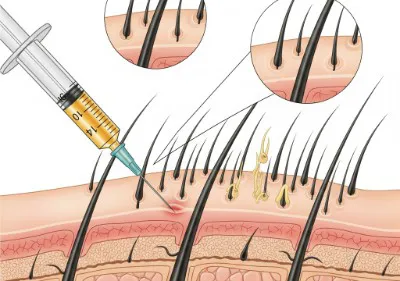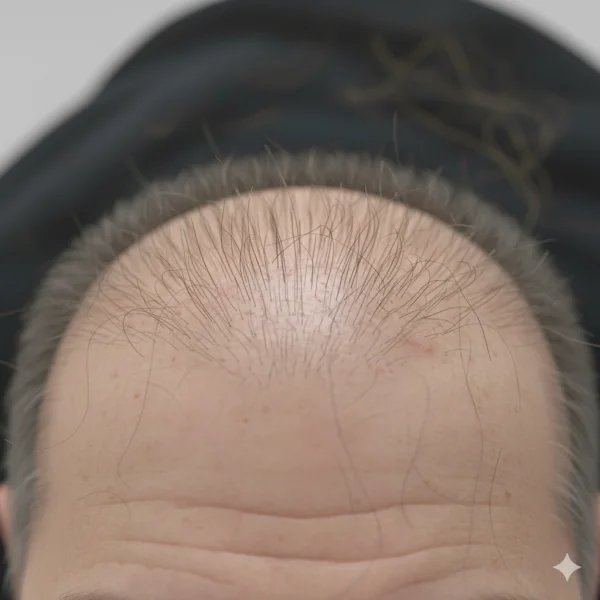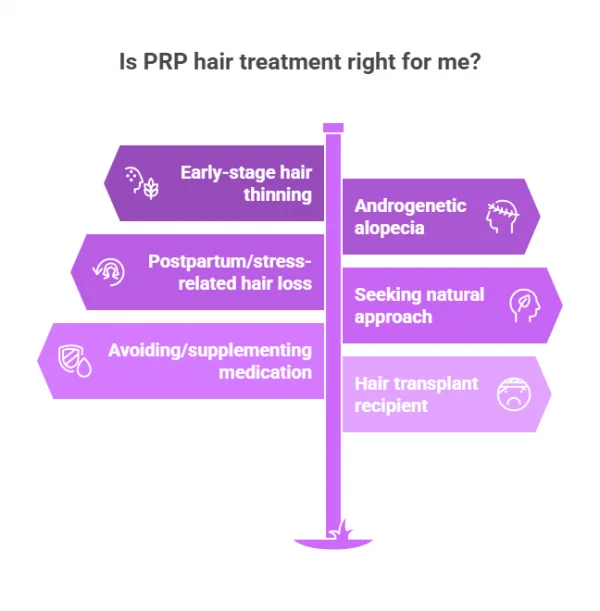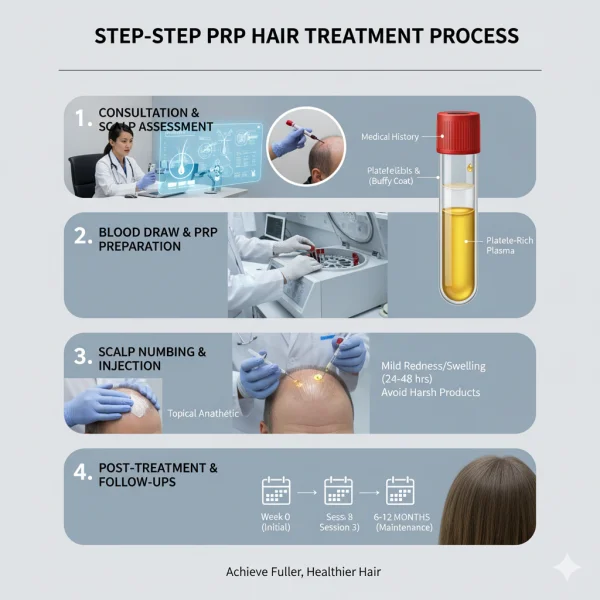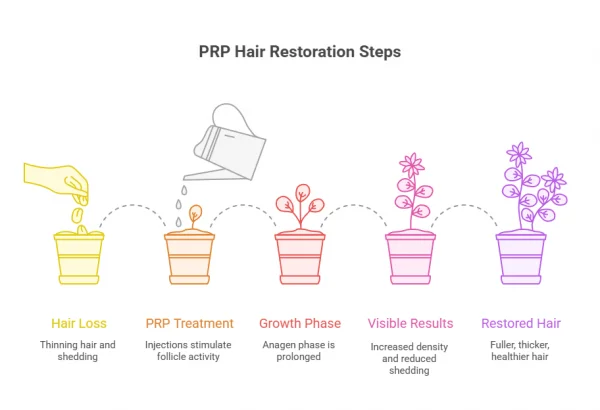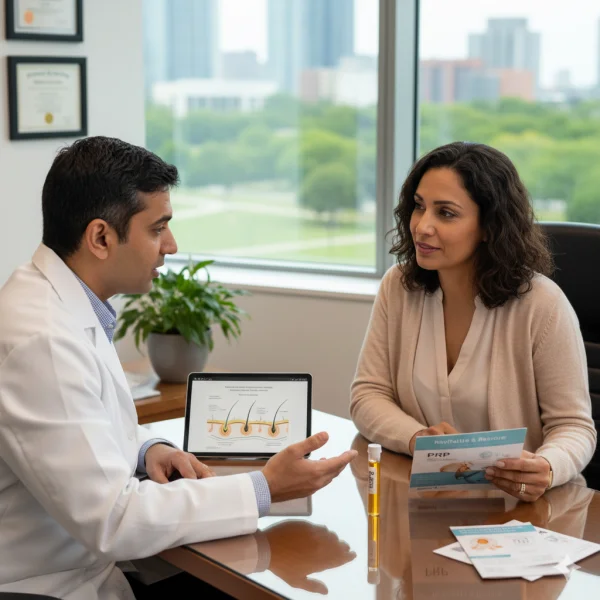Hair thinning often starts subtly: the parting looks wider, the ponytail feels thinner, or your once-bouncy fringe starts to sit a little flat. It’s not dramatic, but it’s enough to make you feel less like yourself. And the trouble is, most quick-fix promises don’t deliver. Special shampoos rarely go beyond surface conditioning, supplements take months with uncertain results, and surgery feels far too extreme when you’re only just noticing the change.
That in-between space can feel frustrating. You don’t want to sit back and watch more strands slip away, but you also don’t want to commit to something invasive or synthetic. This is where PRP therapy comes into play. By using a concentrated portion of your own blood, PRP directs growth factors to weakened follicles. It doesn’t disguise hair loss; it supports the scalp in producing stronger, thicker strands over time.
What makes it compelling is the balance: no harsh chemicals, no stitches, no dramatic downtime. Just your body’s own biology working smarter. Studies have shown that PRP can increase hair density and reduce shedding, particularly in cases of early to moderate hair loss. For many, it’s less about chasing perfection and more about reclaiming a sense of control and confidence.
Next, let’s examine how PRP therapy for hair loss works and who benefits from it the most.
Our Preferred Partner - Cellenis PRP
Not all PRP systems are created equal — and the quality of preparation makes a big difference to outcomes. That’s why many leading clinics choose Cellenis® PRP, a clinically validated system designed to deliver highly concentrated, pure platelet-rich plasma every time. By using a closed, sterile kit and advanced centrifugation, Cellenis® ensures consistency, safety, and optimal platelet yield — the growth factors your skin, hair, or tissue rely on for regeneration. Whether the goal is brighter skin, fuller hair, or faster recovery, Cellenis® PRP offers practitioners and patients confidence in both the science and the results.
What Is PRP Therapy And Why Is It Used For Hair Loss?
Hair thinning is more than a cosmetic concern - it can affect your confidence, identity, and well-being. PRP therapy (Platelet-Rich Plasma) is a cutting-edge, non-surgical treatment that uses your body’s natural healing mechanisms to help restore healthy hair growth.
Clinical studies have confirmed PRP’s efficacy, with patients experiencing a mean increase of nearly 46 hairs per cm² after a series of treatments, alongside improved follicle vitality and minimal side effects, underscoring PRP’s safety and potential for natural hair regrowth.
How PRP Supports Natural Hair Regrowth
PRP therapy works by isolating influential growth factors in your blood and directing them exactly where they’re needed: the scalp.
- What is PRP? It stands for Platelet-Rich Plasma - a golden, concentrated liquid derived from a small sample of your blood, rich in healing proteins and regenerative growth factors.
- PRP, or Platelet-Rich Plasma, is a golden, concentrated liquid derived from a small sample of your blood. Your practitioner draws a vial of blood, spins it in a centrifuge to separate the components, and extracts the platelet-rich layer for treatment.
- Why it matters for hair loss: Platelets release growth factors that stimulate dormant hair follicles, extend the hair growth phase, and boost local circulation - all of which support natural regrowth.
- Targeted stimulation: PRP is injected into areas of the scalp showing signs of thinning or shedding, encouraging follicles to strengthen and produce thicker strands.
- Science-backed potential: Multiple studies show that PRP can improve hair density and slow shedding, particularly in androgenetic alopecia (pattern hair loss).
A Regenerative Approach Rooted in Biology
PRP doesn’t add artificial volume or cover up hair loss - it helps revive your follicles. For many, that makes it a more appealing and natural alternative to medications or surgery.
- No foreign substances: Because PRP uses your blood, there's little risk of allergic reaction or rejection.
- Minimally invasive: There’s no cutting, stitches, or significant downtime - just tiny injections and a short recovery.
- Versatile use: While commonly used for hereditary hair thinning, PRP may also support hair recovery after pregnancy, illness, or hormonal shifts.
Whether you’re just noticing early thinning or looking to boost the results of other treatments, PRP offers a promising, biologically based solution.
Who Is PRP Hair Treatment For?
If you're noticing more hair in the shower or less volume than you used to, you're not alone - and you’re certainly not without options. PRP hair treatment offers a natural, minimally invasive solution for many people experiencing hair thinning or loss.
Ideal Candidates for PRP Hair Therapy
PRP is most effective when it's matched to the right candidate. Here’s who tends to benefit most:
- Early-stage hair thinning: PRP is particularly effective in the early phases of hair loss, where hair follicles are weakened but still present. It can help reinforce and reawaken those follicles before they become dormant.
- Androgenetic alopecia (pattern hair loss): Whether you're male or female, if your hair is thinning around the crown, temples, or part line, PRP may help strengthen and thicken the remaining hair.
- Postpartum or stress-related hair loss: For women experiencing temporary shedding due to hormonal changes or stress, PRP offers a restorative, drug-free option.
- People seeking a natural approach: Because PRP uses your blood, it appeals to those looking for biocompatible, chemical-free therapies.
- Patients avoiding or supplementing medication: Not everyone is comfortable with topical minoxidil or oral finasteride. PRP can work as a standalone or complementary therapy.
- Hair transplant recipients: PRP is often used post-transplant to accelerate healing and improve the survival of grafts.
When PRP Might Not Be Suitable
PRP has limitations, and it’s essential to set realistic expectations.
- Advanced hair loss or bald patches: PRP may not yield noticeable results if the scalp is smooth and shiny, indicating no active follicles.
- Scarring alopecia: PRP is less likely to be effective in hair loss caused by scarring (such as lichen planopilaris or lupus).
- Underlying health issues: Individuals with platelet disorders, active infections, or uncontrolled autoimmune conditions should consult a specialist before proceeding.
PRP isn’t a miracle cure, but in the right hands, it can significantly slow hair loss and improve hair density for the right patient. A consultation with a skilled practitioner will help you understand if your hair loss type, health profile, and goals align with what PRP can offer.
What Happens During A PRP Hair Restoration Session?
If you're considering PRP hair treatment, it's natural to want clarity on what the session involves. Here’s what you can expect from start to finish - minus the hype, plus the facts.
A Step-by-Step Look at the PRP Hair Treatment Process
From the moment you walk into the clinic to when you leave, your session is designed to be safe, comfortable, and efficient.
- Consultation and scalp assessment: Before any treatment begins, your practitioner will assess your scalp, discuss your hair loss pattern, and ensure you’re a suitable candidate for PRP.
- Blood draw (just like a routine test): Around 10–20ml of your blood is drawn, usually from your arm. This blood contains the platelets that will form the basis of your personalised PRP solution.
- Centrifugation (the separation stage): Your blood is placed in a centrifuge machine, which spins it rapidly to separate the platelet-rich plasma from the red and white cells. This takes around 10–15 minutes.
- Preparation of the PRP serum: The practitioner extracts the golden-coloured PRP layer using a sterile technique. This portion contains the concentrated growth factors that support hair follicle activity.
- Scalp cleansing and numbing (for comfort): Your scalp is cleansed thoroughly, and a topical numbing cream may be applied. Some clinics use cold air or vibration devices to reduce any discomfort further.
- Targeted micro-injections: Using a fine needle or mesotherapy device, the PRP is injected across thinning areas - typically the crown, hairline, and parting. Each injection is spaced out to ensure even coverage.
- Post-treatment care: You may feel mild tenderness or notice small bumps at the injection sites. These usually subside within 24–48 hours. Aftercare guidance will be provided to help you avoid irritation.
What It Feels Like and How Long It Takes
- Comfort levels: Most patients describe the sensation as tolerable, comparable to microneedling or multiple small pinpricks. Discomfort is brief and managed with numbing agents if needed.
- Duration of the session: A whole appointment typically lasts 60–90 minutes, including preparation and recovery time.
- No downtime required: You can return to work or your usual activities immediately, though it’s best to avoid strenuous exercise or washing your hair for 24 hours.
PRP hair restoration is designed to work with your body’s regenerative abilities. It’s a precise, clinical process that feels refreshingly straightforward, especially for those who’ve tried more invasive or less effective options in the past.
Does PRP Work For Hair Loss?
It’s one of the most asked questions when exploring regenerative treatments: Does PRP work for hair loss? While individual results vary, a growing body of clinical research and real-world patient experiences suggests that PRP can be a valuable tool for thinning hair.
A systematic review of multiple clinical trials corroborates the effectiveness of PRP, with 84% of studies reporting hair regrowth benefits, and half demonstrating statistically significant improvements in hair density and thickness, reinforcing PRP's role as a scientifically supported treatment option.
Evidence-Based Results from Clinical Studies
PRP has moved beyond the experimental stage, with multiple studies supporting its potential as a hair restoration treatment.
- Increased hair density and thickness: Studies consistently report improvements in hair shaft calibre, follicle activity, and overall volume, especially in patients with androgenetic alopecia (male and female pattern hair loss).
- Visible results within 3–6 months: Most patients see noticeable improvements after a few sessions, with peak results typically developing by month six.
- Reduced hair shedding: Many report a decrease in daily hair loss, especially in the early stages of treatment, which often boosts confidence even before regrowth occurs.
- Enhanced follicle survival: PRP stimulates the anagen (growth) phase of the hair cycle, helping to prolong active growth and improve the vitality of weak or dormant follicles.
What Influences Your Results?
PRP is a biological treatment, so various personal and procedural factors can influence outcomes.
- Age and stage of hair loss: Younger patients and those with early-stage thinning generally respond best, as their hair follicles are more likely to be active.
- Health and lifestyle: Smoking, poor nutrition, and chronic stress can reduce the effectiveness of regenerative therapies like PRP.
- Consistency of treatment: A full course of PRP (typically three to four sessions spaced weeks apart, followed by maintenance) is key to achieving and maintaining results.
- Quality of PRP preparation: Not all PRP is created equal. The technique used to separate and concentrate the platelets can significantly impact the treatment’s potency.
PRP won’t deliver instant results or reverse complete baldness, but it can offer many real and meaningful improvements when used strategically. Think of it as a long-term investment in your scalp’s health, backed by science and driven by your biology.
PRP Vs Other Hair Loss Treatments
Choosing the right hair restoration treatment can feel overwhelming with so many options. Each approach comes with strengths, limitations, and suitability depending on your hair loss stage and lifestyle, from over-the-counter solutions to in-clinic procedures. So, how does PRP measure up?
Understanding Where PRP Fits in the Hair Loss Toolkit
PRP therapy offers a regenerative, non-pharmaceutical path to stimulating natural hair growth, but how does it compare to other standard treatments?
PRP vs Minoxidil (Regaine)
- Minoxidil is a topical treatment approved for both men and women. It's most effective for slowing hair loss rather than regrowing hair.
- PRP targets deeper regeneration, stimulating the follicle at the root through growth factors. It often complements minoxidil for better results.
- Compliance matters: Minoxidil requires twice-daily use indefinitely. PRP is performed in-clinic over a defined treatment cycle, making it more manageable for some.
PRP vs Finasteride
- Finasteride is an oral medication for men only, working by reducing DHT, a hormone linked to hair follicle shrinkage.
- PRP is hormone-free and suitable for women, making it more inclusive.
- Fewer systemic side effects: Finasteride may affect libido or hormone balance in some users, whereas PRP uses your body’s biology.
PRP vs Hair Transplants
- Hair transplants physically move follicles, offering permanent results in advanced hair loss - but they require surgery, recovery, and significant cost.
- PRP is non-surgical and ideal for early to moderate loss, making it an excellent first-line or complementary option.
- Post-transplant PRP: Many surgeons recommend PRP after hair transplants to support healing and improve graft survival.
PRP vs Natural Supplements and Scalp Treatments
- Supplements can support general hair health, especially if nutrient deficiencies contribute, but their impact is usually subtle and slow.
- PRP acts locally and directly, injecting growth factors where they’re needed most for targeted regeneration.
PRP doesn't replace every treatment - it often enhances them. Its strength lies in its ability to stimulate dormant follicles, particularly when used in a comprehensive plan.
What To Look For In A PRP Hair Loss Specialist
Choosing the right practitioner for PRP hair restoration is as important as the treatment. A well-qualified specialist can optimise your results, minimise risk, and guide you through the process confidently and carefully.
How to Identify a Skilled and Trustworthy PRP Provider
Medical Qualifications and Experience
- Look for a medically trained professional - ideally a GMC-registered doctor or nurse prescriber with a background in dermatology or aesthetics.
- Experience matters: Choose someone who performs PRP regularly and understands the nuances of treating different hair loss conditions.
Specialisation in Hair Loss and Scalp Health
- Hair loss is complex; not all aesthetic practitioners can assess its underlying causes.
- Opt for a clinic that offers a comprehensive scalp analysis, considers hormonal and nutritional factors, and can tailor your treatment accordingly.
Transparent Consultations
- Your consultation should feel like a conversation, not a sales pitch.
- A good specialist will explain how PRP works, review your suitability, and set realistic expectations, including potential outcomes and timelines.
PRP Technique and Technology Used
- Ask what kind of centrifuge system they use and how they prepare the plasma - these factors influence the quality of your treatment.
- Ensure that sterile, single-use equipment is used and that the clinic adheres to strict hygiene standards.
Results and Testimonials
- Reputable providers will share before-and-after images, patient reviews, or case studies to demonstrate their track record.
- Ask to see examples of patients with hair types or conditions similar to your own.
Follow-Up and Aftercare
- Effective PRP therapy includes more than injections - your provider should offer aftercare guidance, lifestyle tips, and ongoing review appointments.
- Consistency and communication make all the difference in your long-term outcome.
Choosing a PRP specialist is about more than price or proximity. It's about partnering with someone who listens, informs, and knows how to deliver results safely and ethically.
Costs, Considerations, And Commitment
PRP hair restoration isn’t a quick fix - but for the right person, it’s a worthwhile investment in confidence, appearance, and long-term scalp health. Before booking your first session, it’s essential to understand the financial commitment and what goes into achieving meaningful results.
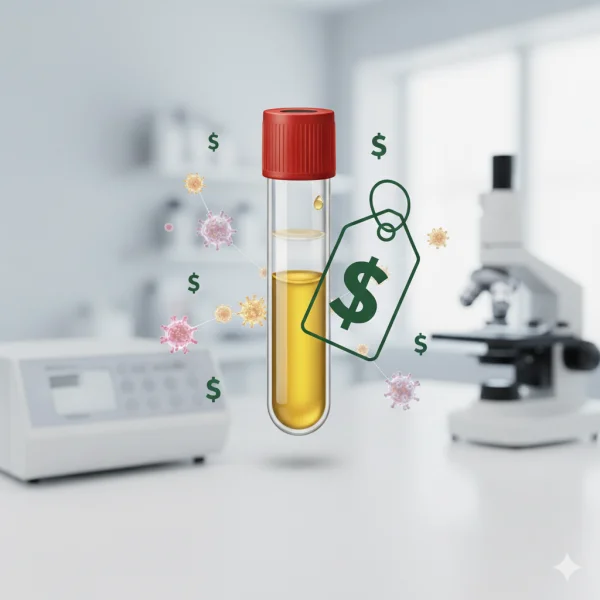
What You’re Paying For - and Why It Varies
The cost of PRP treatment reflects both the clinical expertise involved and the quality of the technology used.
- Typical UK pricing: Expect to pay between £300 and £600 per session, depending on location, clinic reputation, and the specific protocol.
- Package deals: Many clinics offer bundles (e.g. 3 or 4 sessions) at a reduced rate - ideal if you’re committed to a full course.
- Clinic variation: Prices may vary depending on whether your PRP is prepared using standard or advanced centrifuge systems, or if it's combined with add-ons like microneedling or LED therapy.
Is PRP Worth the Investment?
PRP offers a regenerative, non-pharmaceutical alternative to other treatments - but it does require time and commitment.
- Results take time: You’ll typically need 3–4 sessions over 3–6 months to see significant changes, followed by maintenance every 6–12 months.
- No ongoing product cost: Unlike minoxidil or finasteride, PRP doesn’t require daily application or prescriptions, which can add up over time.
- Long-term benefits: Many patients report sustained improvement in hair thickness and reduced shedding, especially with consistent follow-up.
Factors That Influence Your Investment
Not everyone needs the same treatment plan. Your cost will depend on:
- Extent of hair loss: More advanced thinning may require additional sessions or combination therapy.
- Your goals and expectations: Some patients aim to maintain current density, while others want more visible regrowth.
- Clinic location and expertise: London-based or highly specialised clinics may charge more, but often offer deeper diagnostic insight and personalised care.
Investing in PRP is as much about managing expectations as it is about results. The best outcomes come when patients understand the process, stick with the plan, and work with a skilled practitioner.
Ready To Take The Next Step?
You’ve done your research, explored the science, weighed the cost, and now you’re wondering - what happens next? If you’re considering PRP for hair restoration, the next step isn’t a leap - it’s a conversation.
Turning Curiosity into Clarity
Before committing, it’s worth speaking with a qualified practitioner who understands both the clinical details and your personal goals.
- Book a consultation: A reputable clinic will assess your scalp, review your health history, and determine whether you’re a good candidate for PRP. This step is key to tailoring a treatment plan that works for you.
- Ask the right questions: Bring your concerns. Ask about the number of sessions, expected outcomes, maintenance plans, and how PRP may complement other treatments you’re considering.
- Don’t feel rushed: A good practitioner will take time to explain the process clearly and provide honest guidance. Look for transparency, not pressure.
- Review your options: Even if PRP is right for you, combining it with other therapies, like microneedling or minoxidil, may boost your results. Your consultation should explore these options too.
- Plan your treatment schedule: Life is busy. Understanding session timings, post-treatment care, and when to expect results helps you make an informed decision and set realistic expectations.
Finding Confidence in Action
Hair loss can feel deeply personal. But taking that first step towards treatment is empowering - and often, it’s the start of feeling more like yourself again.
Whether you’re looking to slow shedding, restore thickness, or simply regain control, PRP offers a well-researched, natural option that fits within a broader wellness journey.
Want to talk to someone who gets it? Book a personalised consultation with one of our trusted specialists.
Conclusion
Hair loss may be a common concern, but that doesn’t mean the solutions must be generic. PRP therapy stands out because it’s personal - it uses your body’s regenerative power to restore strength and density to thinning hair. PRP offers promise and science-backed credibility for those in the early stages of hair loss, or anyone looking for a natural, minimally invasive approach.
What matters most is working with someone who understands the nuance of hair health - someone who won’t rush you into treatment, but will help you make an informed decision based on your goals, history, and lifestyle.
If your reflection no longer feels like it tells the whole story, consider speaking with a medically trained practitionerspecialisings in PRP and hair restoration. A tailored consultation is often the most valuable first step towards healthier hair, but renewed confidence in how you show up in the world.
Your PRP Questions
Real Questions from Real People — Answered
Straightforward answers to the questions people like you are asking right now about PRP.

Cost of PRP treatment for hair?
Please give the cost and how many sessions needed to prevent complete hair loss and new hair
Hair loss.
Dear reader My name is Mo I'm interested to have prp treatment in your clinic and I have some questions How many ml of prp i will get injured ? Did you analyse prp There any other services after the treatment is done Thank you
To view all the PRP questions, please click here.
Or click here to ask your own question.
Find A Verified Clinic
Trusted PRP Experts, Local to You
Easily connect with qualified, verified professionals for safe, reliable treatment.


Hoole Medispa
51 Hoole Road, Hoole, Chester, CH2 3NH
Welcome to Hoole Spa and Aesthetics situated in the beautiful Grade II listed building in the suburbs of Hoole, Chester.
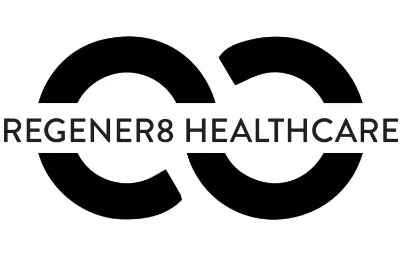
Regener8 Healthcare
42 Hewell Road, Barnt Green, Birmingham, B45 8NF
Regener8 Healthcare brings together a team of highly qualified specialists, who are all passionate about aesthetics, longevity and wellness treatments.
To find a PRP clinic near you, please click here.

